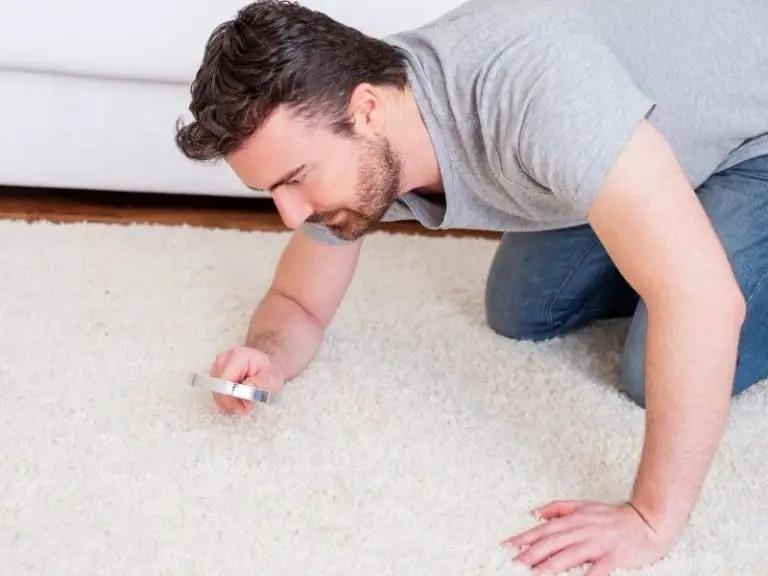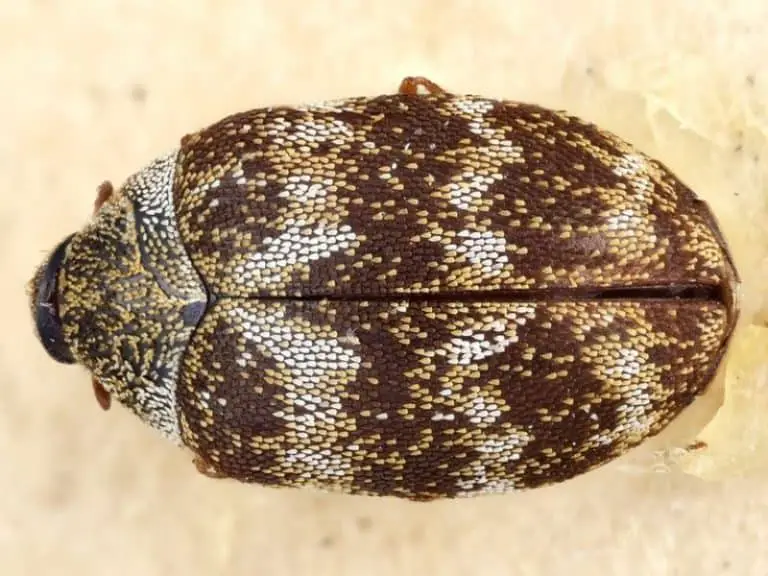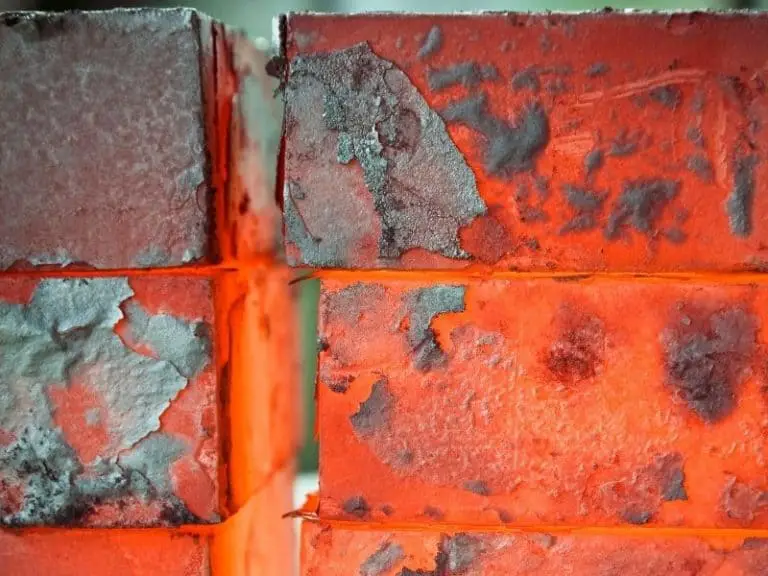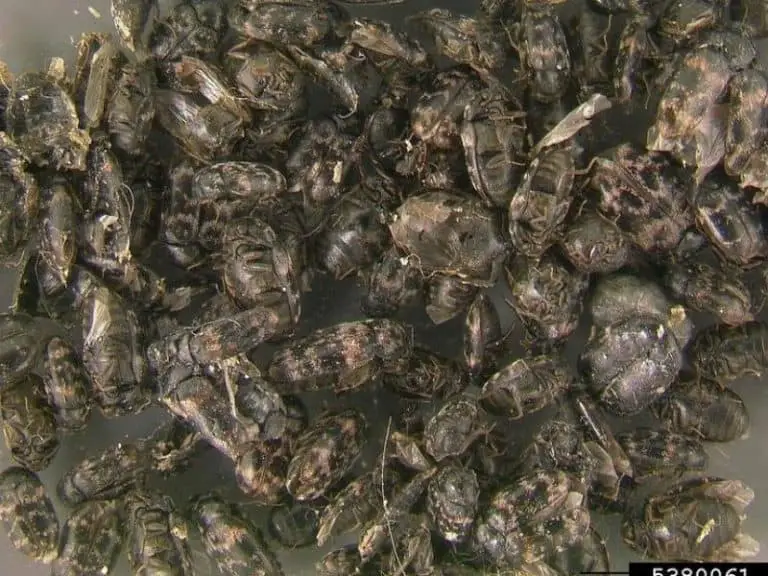Is It Normal to Have Just a Few Carpet Beetles Or Is It Infestation
Carpet beetles are some of the most common household pests all over the planet. So, it is natural for someone to start panicking when spotting a single beetle and wondering if this is a sign of a more serious infestation. Keep reading if you want to find out if it’s a time for worrying and calling for professional exterminators.
Seeing a few carpet beetles inside the home is perfectly normal. The adult carpet beetles may have accidentally flown in through open windows and doors. Larvae may have entered your home via used furniture or plants. However, it is a good idea to assess the problem ASAP either DIY or with pro help.
Beetles that may end up indoors are varied. Prior to attempting to deal with carpet beetles, you have to make sure first that the ones inside your home are carpet beetles and not any other beetle type.
Below you will learn how to differentiate carpet beetles from other beetles, plus a few other important matters.
Carpet Beetles vs. Other Beetles
First things first: make sure that what you are seeing are carpet beetles and not other types of beetles. Otherwise, you may fail to get rid of them successfully.
This is most especially true if you are planning to deal with the problem by means of some DIY solutions and not by contacting professional carpet beetle exterminators in your area.
Making a confirmation is a must before you attempt to panic or carry out subsequent steps.
Just because the bugs inside your home look like beetles doesn’t mean right away that they are carpet beetles. They could be other species of household beetles, such as:
- American spider beetles
- Cabinet beetles
- Common furniture beetles
- Dried fruit beetles
- Drugstore beetles
- Flour beetles
- Foreign grain beetles
- Hide beetles
- Museum beetles
- Plaster beetles
- Shiny spider beetles
- White-marked spider beetles
Most of the time, the names of beetles that may invade homes tend to reveal where they can be found or what they eat. For instance, common furniture beetles tend to eat wooden furniture.
They also cause damage to wooden floors. Dried fruit beetles, on the other hand, usually infest dried fruits. However, they may eat other foods, too.
Again, it’s a must that you identify which beetles you have at home before taking any action.
Identifying an Infestation
Fortunately, determining whether what you are seeing are carpet beetles or other types of beetles is not that tricky. Knowing what to look for in them can help you come up with the right conclusion.
Let us begin with adult carpet beetles, the ones that can lay hundreds of eggs and start an infestation.
Adult carpet beetles have oval bodies. They crawl around on six legs, and they have a couple of antennae.
Adult carpet beetles are generally smaller than bed bugs, measuring only two to five millimeters long — bed bugs are five to seven millimeters long, and their flattened bodies puff up after consuming blood.
Common carpet beetles have black, red and white scales. On the other hand, varied carpet beetles have brown, yellow and white scales. The scales of adult carpet beetles, by the way, can wear off over time.
The problem with identifying adult carpet beetles is that they closely resemble some other types of beetles that may invade your home, too.
They can be easily mistaken for hide beetles, museum beetles, and cabinet beetles, especially if the person inspecting them is not used to seeing carpet beetles.
However, it’s more important that you properly identify larvae carpet beetles. And you will know why in a few.
Speaking of larvae carpet beetles, mistaking them for other pests when you happen to come across them is unlikely. This is true most especially when you poke or disturb them. It’s because they will crawl up and play dead.
Larvae carpet beetles are longer than adult carpet beetles. They can be anywhere from four to eight millimeters long.
Young carpet beetles do not look anything like their adult counterparts — they look like furry worms. The bodies of larvae carpet beetles have bands and are covered with hairs. They also have hair-like projections on one or both ends.
The Real Pests: Baby Carpet Beetles

You may be wondering: “should I be worried about carpet beetles when I come across them?” Well, it depends on whether the ones you spot are adults or larvae.
If you happen to see adult carpet beetles indoors, chances are that they ended up there only by accident. There’s really no reason for them to invade your home.
It’s because what they love eating, which are pollen and nectar, are abundantly found outdoors. Adult carpet beetles are not interested in your carpet or clothes.
Larvae carpet beetles, on the other hand, are not fond of pollen and nectar. What they prefer to eat are natural fibers and animal products, which can be in abundance inside your home.
So, in other words, a carpet beetle infestation involves larvae carpet beetles alone.
They are the ones that can cause damage to your carpet, furniture, clothes, linens, leather bags, wall hangings, drapes, and others.
They are also the ones that can march into your kitchen and pantry and nibble on some of the foods there!
The only thing that adult carpet beetles are guilty of is that they once laid eggs inside your home.
However, it’s not all the time that the presence of larvae carpet beetles indoors can be blamed on adult carpet beetles. We made it clear earlier that “yes” is the answer to the question “is it normal to have a few carpet beetles?”
But just because there are some adult beetles inside your home doesn’t mean right away that they have laid some eggs there. That’s quite impossible if they are males or non-pregnant females.
If such is the case, then you can consider the presence of adult carpet beetles as completely harmless.
This is true even if there are some larvae bed bugs inside your home. In some instances, the residents are the ones that are responsible for the presence of larvae carpet beetles, often without their knowledge.
For instance, it is possible for a carpet beetle problem to come into being if you purchase a secondhand piece of furniture that is infested with larvae carpet beetles. The same is true if you adorn your interiors with plants that are safeguarding some of those hairy creepy crawlers.
Confirming a Carpet Beetle Infestation
Again, it’s perfectly normal to come across one carpet beetle or two every now and then.
This is especially true if you are living in one of the states on the north coast of the US where the climate is colder and more humid. However, do take note that there are carpet beetles practically everywhere in the US.
This is why it doesn’t necessarily mean that you should carry out some DIY solutions for carpet beetles or pick up the phone and set an appointment with professional exterminators in your area.
How many carpet beetles is an infestation? Well, it’s really hard to tell based on counting them alone.
Before the problem is considered an infestation, there has to be an unusually large number of pests in your home. There also has to be substantial damage to your belongings due to their presence.
If there are only a few carpet beetles and you cannot seem to stumble upon any damage that they may have caused, technically, there is no infestation.
It’s a completely different story if there are lots of them around and there’s evident damage everywhere! It’s time to spring into action if any or both are present.
Damage to Your Belongings
There’s no need to worry about encountering adult carpet beetles inside your home.
They will simply look for a way to get back outside because it’s where they can have easy access to pollen and nectar, which are on the top of their diet list. Adult carpet beetles are no longer capable of digesting natural fibers and animal products.
On the other hand, you should be wary if there are lots of larvae carpet beetles anywhere in your home.
Immediately after seeing some of them, check the clothes in your closet or cabinet. If there are holes in them, chances are that there are plenty of larvae carpet beetles around.
It doesn’t really come as a surprise since a single female adult carpet beetle can lay up to a hundred eggs in one sitting — sometimes more!
You should check your hamper, too. Larvae carpet beetles find dirty clothes with food stains yummy.
Aside from your clothes, you should also check other items that are out of natural fibers or with animal-based products.
Some of them include leather bags and shoes, bed sheets, pillowcases, carpets, rugs, upholstered furniture, curtains, drapes, paintings, and mounted animals.
Despite their name, larvae carpet beetles also love eating human foods, such as those that are in your kitchen and pantry. This is why you should also inspect these areas as soon as you suspect that there’s an infestation.
In some instances, you may find larvae carpet beetles in the attic, basement and garage. That’s because many of the items that are normally stashed in these areas can attract those pests.
Some of them include old clothes, stuffed toys, and upholstered furniture pieces. Larvae carpet beetles also eat dead insects.
They eat dead animals, too, and it’s due to this why a small animal that gets trapped and dies in the vents, ducts, and wall and ceiling voids may also cause a carpet beetle problem to strike.
Carpet Beetle Dermatitis
Many people mistake a carpet beetle problem for a bed bug infestation. That’s because both carpet beetles and bed bugs can cause the skin to become red and itchy.
However, there are a couple of things that you need to know about carpet beetles:
- They do not bite — the symptoms are due to the skin’s unfavorable reaction to them.
- Only larvae carpet beetles can cause skin redness and itchiness because of their hairs.
What happens to the skin when it comes into contact with larvae carpet beetles is referred to by health experts as “carpet beetle dermatitis”.
However, just because there are larvae carpet beetles in your home doesn’t necessarily mean that you will surely experience carpet beetle dermatitis.
Not all people develop unfavorable reactions to larvae carpet beetles. Carpet beetle dermatitis is more common in kids. Mainly, it’s for the fact that they tend to spend a lot of time on infested carpets.
Some adults are allergic to larvae carpet beetles. However, some studies say that those with carpet beetle dermatitis and are exposed to larvae carpet beetles several times tend to become desensitized.
So, in other words, being in contact with young carpet beetles repeatedly may cause carpet beetle dermatitis to go away naturally.
It’s important to note that some people may react to larvae carpet beetles severely. For instance, they may also have watery eyes. Others may have shortness of breath, too, which requires a trip to the ER.
A Headcount Can Give a Better Idea
The minute that you have confirmed the presence of larvae carpet beetles, it’s a good idea to have a guesstimate of their population. Doing this will give you a better idea of the current extent of the problem.
Counting them one by one can be done. But if you don’t have all the time in the world to do that, you may simply buy some pest traps online or from the nearest hardware or home improvement store.
The right pest traps for the job are those that come with glue pads, with some of them having pheromones, too.
Some of these products are being marketed for moths, while others are being marketed for spiders. No matter what pest traps are for, they can also catch larvae carpet beetles that will crawl through them unsuspectingly.
Pest traps for trapping larvae carpet beetles are best placed close to their food sources.
It’s also recommended to install some in dark areas because baby carpet beetles hate the light, just like many other common household pests.
Before placing a trap or two in the kitchen and pantry, make sure that it’s non-toxic.
Just a word of advice: if there are kids and pets around, never buy pest traps with pesticides.
After a few days, check out the pest traps that you placed in various strategic places in your home.
If the total of casualties is anywhere from 40 to a hundred, it’s safe to assume that a female adult carpet beetle once flew inside your home through an open window or door and then laid some eggs — again, it can lay up to a hundred or more eggs.
Steps That May be Taken
Is it normal to have a few carpet beetles? Yes, if they are adults.
But if you don’t want them inside your home, you may place or hang some pest traps in open windows.
Then hope that some of those flying adult carpet beetles will land on the glue pads instead of elsewhere indoors.
Having a few larvae carpet beetles may be considered as normal, too. However, the presence of a lot of them should be a major cause for concern as there is likely to be an infestation.
When it comes to a carpet beetle infestation, there are a couple of steps that you may take…
Solve the Problem on Your Own
Just like many other common household pests, there are various home remedies for larvae carpet beetles.
To get rid of as much of them as possible, use a vacuum cleaner to suck them as well as the eggs, if any, out of their hiding places.
It’s a good idea to follow vacuuming with steam cleaning — carpet beetles cannot stand high temperatures.
It’s because of this why you should also launder your clothes and other washable items in hot water for at least half an hour. You may also toss them in the dryer for the recommended amount of time.
Cracks, crevices, undersides, and surfaces may be rid of larvae carpet beetles with vinegar. Essential oils like neem, clove and peppermint can be used, too.
If you are not in a rush, you may sprinkle diatomaceous earth or baking soda on problem areas — it works by dehydrating larvae carpet beetles, killing them eventually.
You should also eliminate clutter and switch to items out of synthetic materials.
Leave the Job to Industry Experts
Worry not if you don’t have the time to hunt down larvae carpet beetles personally. That’s because you may simply get in touch with a company providing residential and commercial carpet beetle extermination.
However, this approach is not as easy on the pocket as carrying out some home remedies for the problem. The cost of professional carpet beetle extermination can range anywhere from $100 to $300.
The total cost of the service will depend on factors such as the severity of the infestation and the number of rooms infested.
The type of treatment, which can either be chemical or heat, also affects the overall cost.
Just Before You Count Carpet Beetles
Especially if you live in the US where carpet beetles are quite common, there is no need to panic if you spot a carpet beetle or two inside your home.
Adult carpet beetles have wings that allow them to fly. There is a possibility for them to accidentally wind up inside your home by flying through open windows and doors.
Do most homes have carpet beetles? Yes, and many homeowners choose to simply shrug it off.
However, it is an entirely different story if there are a lot of larvae carpet beetles.
And if their presence is coupled with significant damage to your carpet, clothes, and other belongings, you may have a carpet beetle problem that needs to be resolved as soon as possible, either via the DIY route or by seeking the help of the pros.
Medical Disclaimer: TheHomePestControl is a digital publisher and does not offer personal health or medical advice. The contents of this website are not intended to substitute for professional medical advice, diagnosis, or treatment.
Affiliate Disclaimer: As an Amazon Associate, I earn from qualifying purchases made on our website. If you make a purchase through links from this website, I may earn a commission at no additional cost to you.






